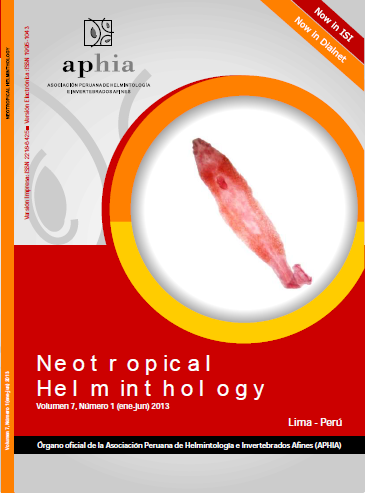DISINFECTION OF WATER USING ELECTROINTENSIVE PROCESSES
DOI:
https://doi.org/10.24039/rnh201371946Keywords:
Coliforms , disinfection, parasites, photolysisAbstract
The realization of the photo-electrochemical process consists in percolating the solution to be treated through an electrolytic reactor, in which the anodes coated with metal oxides remains under the effect of ultraviolet radiation (UV). The solution used in this study was contaminated artificially from fecal samples positive for bacteria and intestinal parasites. The evaluation of the process for the disinfection of water was held in photo-electrical-chemical reactor, with a total volume of 10.0 Lper batch system contaminated with human fecal material. It was used as the -1supporting electrolyte solution of sodium perchlorate at 0.1 mol. Land applying a current density -1of 14 mAwith the aid of a source and a flow rate of 250 L.h. The UVradiation was provided by a mercury vapor lamp of 55 Wwithout bulb shield. The center electrode is inserted through a quartz bulb. Samples were analyzed for pH, conductivity, chemical oxygen demand (COD), and turbidity. Aspects of microbiological and parasitological parameters were treated for 0, 5, 10, 20, and 30 min.. After 30 min., 98.9% reduction in parasitic forms (cysts and eggs) was observed and 99.8% of the colony of Escherichia coliwas present. There was a reduction in COD values (65.7%) and turbidity (92.3%) of samples after treatment exposure, as a result of electrochemical oxidation of organic compounds dissolved in the medium.
Downloads
Published
How to Cite
Issue
Section
License
Copyright (c) 2021 Neotropical Helminthology

This work is licensed under a Creative Commons Attribution-NonCommercial-NoDerivatives 4.0 International License.
OBJETO: El AUTOR-CEDENTE transfiere de manera TOTAL Y SIN LIMITACIÓN alguna al CESIONARIO los derechos patrimoniales que le corresponden sobre la (s) obra(s) tituladas: xxxxxxxxxxxxxxxx, por el tiempo que establezca la ley internacional. En virtud de lo anterior, se entiende que el CESIONARIO adquiere el derecho de reproducción en todas sus modalidades, incluso para inclusión audiovisual; el derecho de transformación o adaptación, comunicación pública, traducción, distribución y, en general, cualquier tipo de explotación que de las obras se pueda realizar por cualquier medio conocido o por conocer en el territorio nacional o internacional.
REMUNERACIÓN: La cesión de los derechos patrimoniales de autor que mediante este contrato se hace será a título gratuito.
CONDICIONES Y LEGITIMIDAD DE LOS DERECHOS: El AUTOR-CEDENTE garantiza que es propietario integral de los derechos de explotación de la(s) obra(s) y en consecuencia garantiza que puede contratar y transferir los derechos aquí cedidos sin ningún tipo de limitación por no tener ningún tipo de gravamen, limitación o disposición. En todo caso, responderá por cualquier reclamo que en materia de derecho de autor se pueda presentar, exonerando de cualquier responsabilidad al CESIONARIO.
LICENCIA DE ACCESO ABIERTO: El AUTOR-CEDENTE autoriza que manuscrito publicado en La Revista Neotropical Helminthology permanece disponible para su consulta pública en el sitio web https://www.neotropicalhelminthology.com/ y en los diferentes sistemas de indexación y bases de datos en las que la revista tiene visibilidad, bajo la licencia Creative Commons, en la modalidad Reconocimiento-No comercial- Sin Trabajos derivados –aprobada en Perú, y por lo tanto son de acceso abierto. De ahí que los autores dan, sin derecho a retribución económica, a la Asociación Peruana de Helmintología e Invertebrados Afines (APHIA), los derechos de autor para la edición y reproducción a través de diferentes medios de difusión.


 Numero 2 Volumen 19 - 2025 (versión Anticipada)
Numero 2 Volumen 19 - 2025 (versión Anticipada)














































